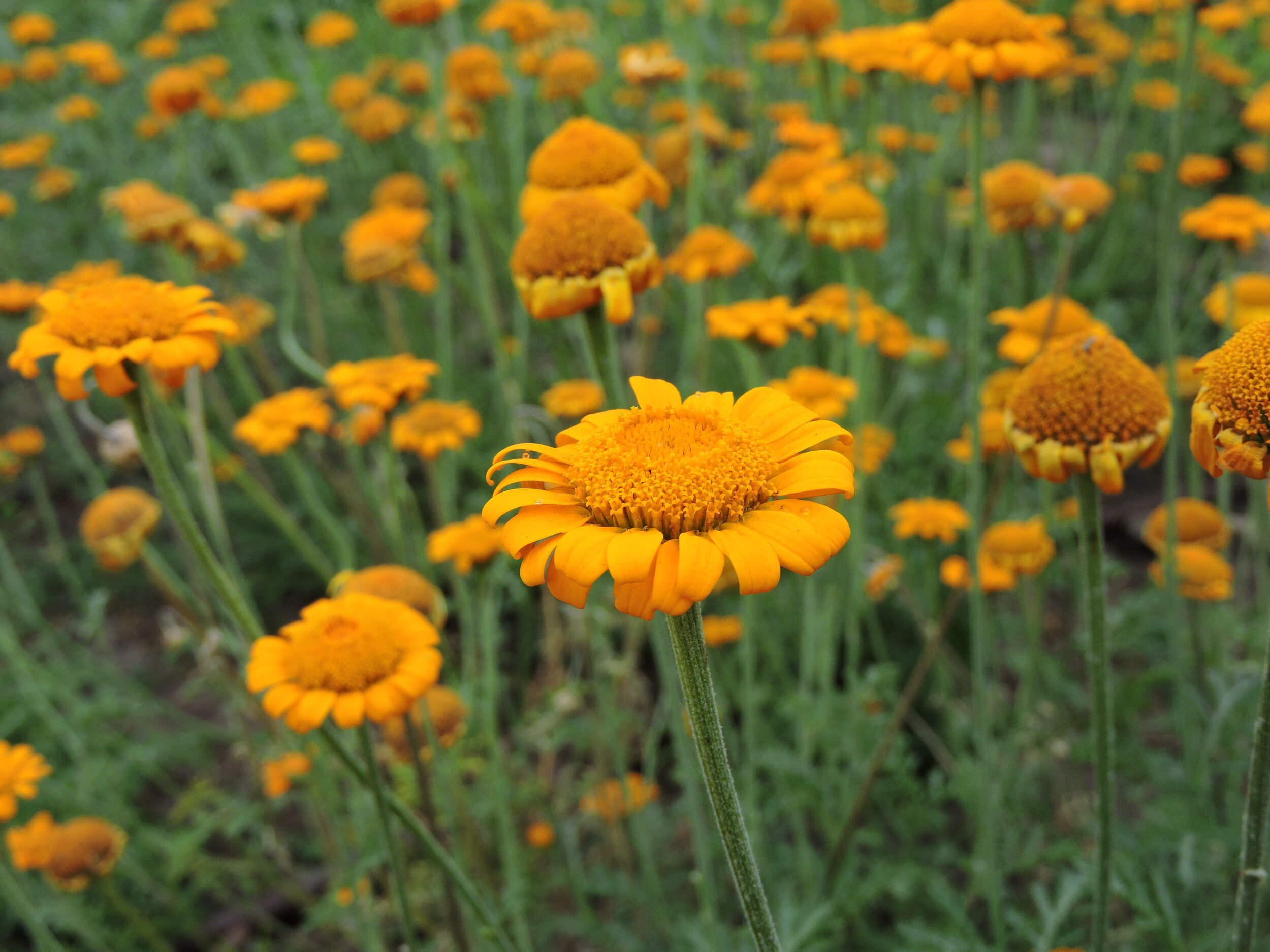 Image 1 of 1
Image 1 of 1


Chamomile, Saint John's
Anthemis sancti-johannis
Description: Saint John’s Chamomile is a hardy perennial herb known for its vibrant, golden-orange, daisy-like flowers and finely divided, aromatic green foliage. Blooming from early summer to fall, this drought-tolerant plant adds bright color and texture to borders, rock gardens, and pollinator-friendly landscapes. With its long-lasting blooms and low-maintenance nature, Saint John’s Chamomile is an excellent choice for sunny, dry gardens.
Wildlife Benefits: The nectar-rich flowers attract bees, butterflies, and other beneficial pollinators, making it a valuable addition to biodiversity-focused gardens.
Medicinal Benefits: While primarily grown for its ornamental beauty, Saint John’s Chamomile is related to medicinal chamomile species and has been used in some traditional herbal applications for relaxation and skin support.
Native Status: Native to the Balkans, Saint John’s Chamomile thrives in warm, dry conditions and adapts well to Georgia’s climate.
Pollinator Friendliness: With its extended bloom time and abundance of nectar, Saint John’s Chamomile provides a reliable food source for pollinators throughout the growing season.
Planting Guidelines:
Height: 18–24 inches
Spacing: 12–18 inches
Sun/Shade: Requires Full Sun
How to Grow: Saint John’s Chamomile thrives in well-drained, sandy, or rocky soil and is highly drought-tolerant once established. Deadhead spent flowers to encourage continuous blooming. Cut back in late fall or early spring to maintain a compact shape and promote fresh growth.
Grow Saint John’s Chamomile for its cheerful blooms, pollinator appeal, and resilience—an easy-care perennial that thrives in dry, sunny landscapes.
Available in 2.5 inch pots
Anthemis sancti-johannis
Description: Saint John’s Chamomile is a hardy perennial herb known for its vibrant, golden-orange, daisy-like flowers and finely divided, aromatic green foliage. Blooming from early summer to fall, this drought-tolerant plant adds bright color and texture to borders, rock gardens, and pollinator-friendly landscapes. With its long-lasting blooms and low-maintenance nature, Saint John’s Chamomile is an excellent choice for sunny, dry gardens.
Wildlife Benefits: The nectar-rich flowers attract bees, butterflies, and other beneficial pollinators, making it a valuable addition to biodiversity-focused gardens.
Medicinal Benefits: While primarily grown for its ornamental beauty, Saint John’s Chamomile is related to medicinal chamomile species and has been used in some traditional herbal applications for relaxation and skin support.
Native Status: Native to the Balkans, Saint John’s Chamomile thrives in warm, dry conditions and adapts well to Georgia’s climate.
Pollinator Friendliness: With its extended bloom time and abundance of nectar, Saint John’s Chamomile provides a reliable food source for pollinators throughout the growing season.
Planting Guidelines:
Height: 18–24 inches
Spacing: 12–18 inches
Sun/Shade: Requires Full Sun
How to Grow: Saint John’s Chamomile thrives in well-drained, sandy, or rocky soil and is highly drought-tolerant once established. Deadhead spent flowers to encourage continuous blooming. Cut back in late fall or early spring to maintain a compact shape and promote fresh growth.
Grow Saint John’s Chamomile for its cheerful blooms, pollinator appeal, and resilience—an easy-care perennial that thrives in dry, sunny landscapes.
Available in 2.5 inch pots
